Novelist Emma Kress On Dangerous Play and Writing
Full disclosure: Emma Kress is my dear friend. During our MFA studies, my Revisionary cohort at Vermont College of Fine Arts was lucky enough to adopt her (though we all respected the fact that we’d forever have to share her with the Tropebusters). Despite my obvious bias, this teacher and writer can only be described as a force, both as a human and a novelist. She has a lot to say and says it all with heart and hope and humor. Her powerful debut novel, Dangerous Play (Roaring Brook Press, August 3, 2021), more than proves that.
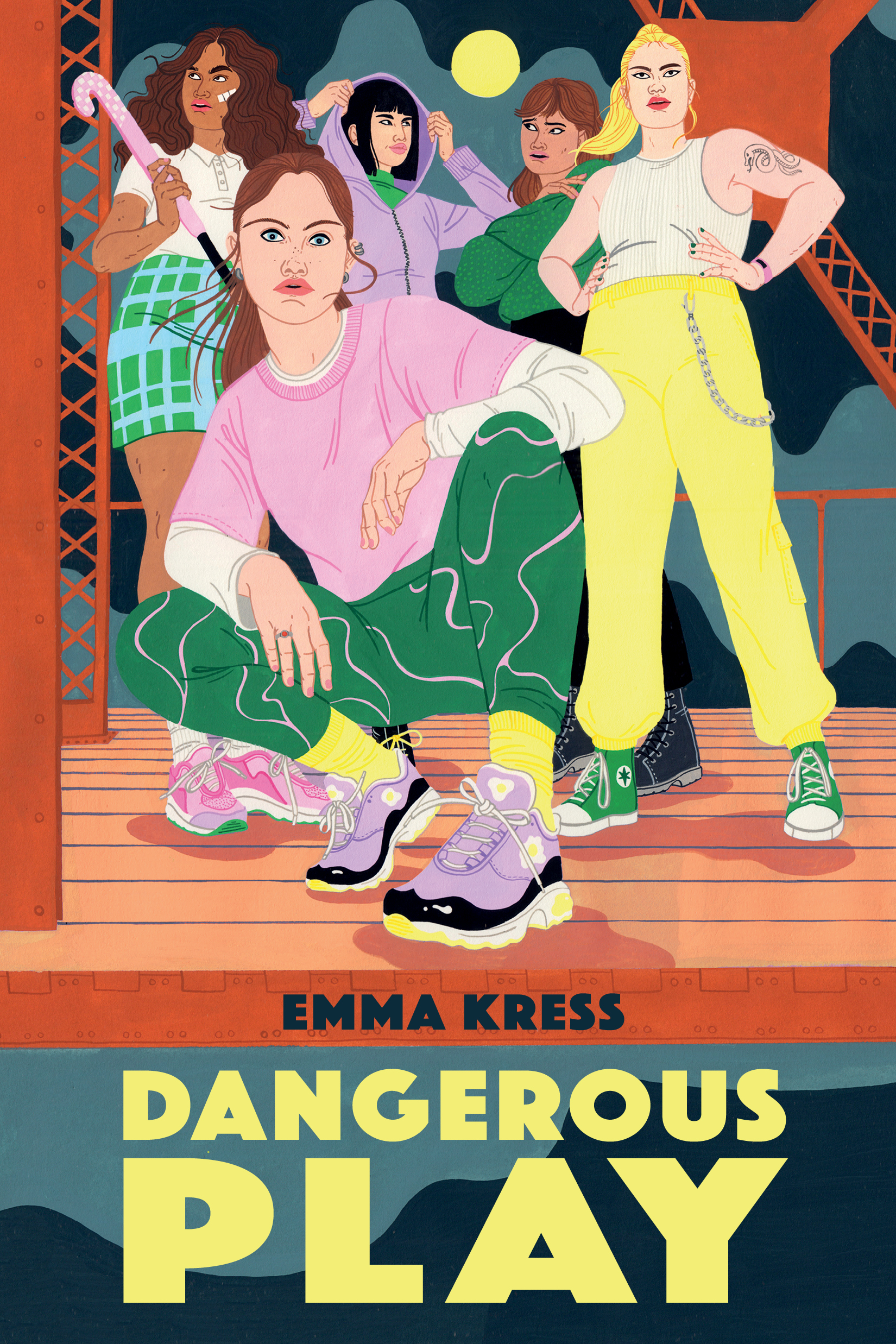 Described by Kirkus as “[A] contemporary feminist debut. . . . A timely and absorbing character study of a sexual assault survivor,” and by Corey Ann Haydu, author of Ever Cursed, as “Vibrant, daring, and deep, Dangerous Play is both a thrilling ride and a profound exploration of female friendship, rape culture, and the difficulty of doing the right thing in a world built on wrongs. An unflinching and empowering debut,” the novel is a timely, gripping and thought-provoking must-read for teens.
Described by Kirkus as “[A] contemporary feminist debut. . . . A timely and absorbing character study of a sexual assault survivor,” and by Corey Ann Haydu, author of Ever Cursed, as “Vibrant, daring, and deep, Dangerous Play is both a thrilling ride and a profound exploration of female friendship, rape culture, and the difficulty of doing the right thing in a world built on wrongs. An unflinching and empowering debut,” the novel is a timely, gripping and thought-provoking must-read for teens.
Here’s a brief description of the novel from Emma’s website:
Zoe Alamandar has one goal: win the State Field Hockey Championships and earn a scholarship that will get her the hell out of Central New York. She and her co-captain Ava Cervantes have assembled a fierce team of dedicated girls who will work hard and play by the rules.
But after Zoe is sexually assaulted at a party, she finds a new goal: make sure no girl feels unsafe again. Zoe and her teammates decide to stop playing by the rules and take justice into their own hands. Soon, their suburban town has a team of superheroes meting out punishments. But one night of vigilantism may cost Zoe her team, the championship, her scholarship, and her future.
I had the pleasure of doing an email Q and A with Emma about the novel and her writing life. Here are the highlights:
When did you know you were a writer, and at what point did you decide you’d write for children and young adults?
I’ve wanted to be a writer since I was ten but it took me until 2010 to take my writing seriously and commit to a daily practice. Writing for children and young adults was a natural choice as I was a teacher, surrounded by both children and children’s literature. At the start of my teaching career, I taught 5th grade and started a few middle-grade books. By the time I was writing seriously, I was teaching teens and reading a lot of YA fiction. But it was more than proximity, I think, that drew me to write for children and young adults. I think it was the same thing that drew me to teaching children and teens: our society underestimates kids, trivializes their concerns, and romanticizes their experience, all while exerting a lot of control over their existence. As a result, giving space on the page to teens and children is a radical act of resistance. And, most of my favorite stories center around change and power. I don’t think there’s any period of life that hits those more than childhood and adolescence.
What’s the greatest source of joy and fun for you when it comes to your writing life?
I love to learn and grow and writing offers a great path to both. I love figuring out the way the world or people work, though the eyes of my characters. I love the way a character can surprise me even though, technically, I’m the one doing the writing. I love the way at some point during the writing process I recognize some deep psychological struggle and get to say, “oh, that’s what you’re about.” Writing for me is like how running is for my husband—it keeps me steady, it keeps me sane. And, um, I don’t even need to sweat.

How has teaching fed into your creative life/process?
I think my love of teaching and the kids I’ve taught has been very helpful in terms of character voice and dialogue. I also feel very present in that time of life. I don’t have to rely on my memories as a teen when students are so ready to say, “you’ll never believe what just happened in the hall.” As a result, I think my stories feel authentic and of this moment. But I also think my commitment to honoring the voices and experiences of children and teens as a teacher is the same thing that drives me as a writer. As I said earlier, I think it is a radical act of resistance to listen to and honor children and teens.
How did getting your MFA at VCFA change your life (writing and otherwise)?
I could wax poetic about all that I love about VCFA for yeeears. VCFA gave me so many tools to improve my writing. As a result, I’m so much better at story structure, character development, side writing, and precision. But my time at VCFA was so much more for me than just a Home Depot for writing tools. VCFA emboldened me to experiment with new genres and audiences. VCFA fed my confidence and helped me pinpoint my strengths while shoring up my weaknesses. And I was actually shocked by the close-knit community. The alums I’d spoke to before I went all talked about it, but somehow, I didn’t think it would apply to me. Wow, I was wrong. It’s such a powerful network of talented and beautiful humans. I’d never been a part of an institution that was built on the twin pillars of compassion and creativity. As a teacher and former administrator, it was incredible to see that in action.
What are three tools you’ve used or created to help draft your novels?
My three biggest tools that I’m obsessed with right now:
- side writing
- working out problems with fat markers on big chart paper
- graph paper spreadsheets (not on the computer)
(For me, a big way to solve problems is often to step away from the manuscript and get off of the computer.)
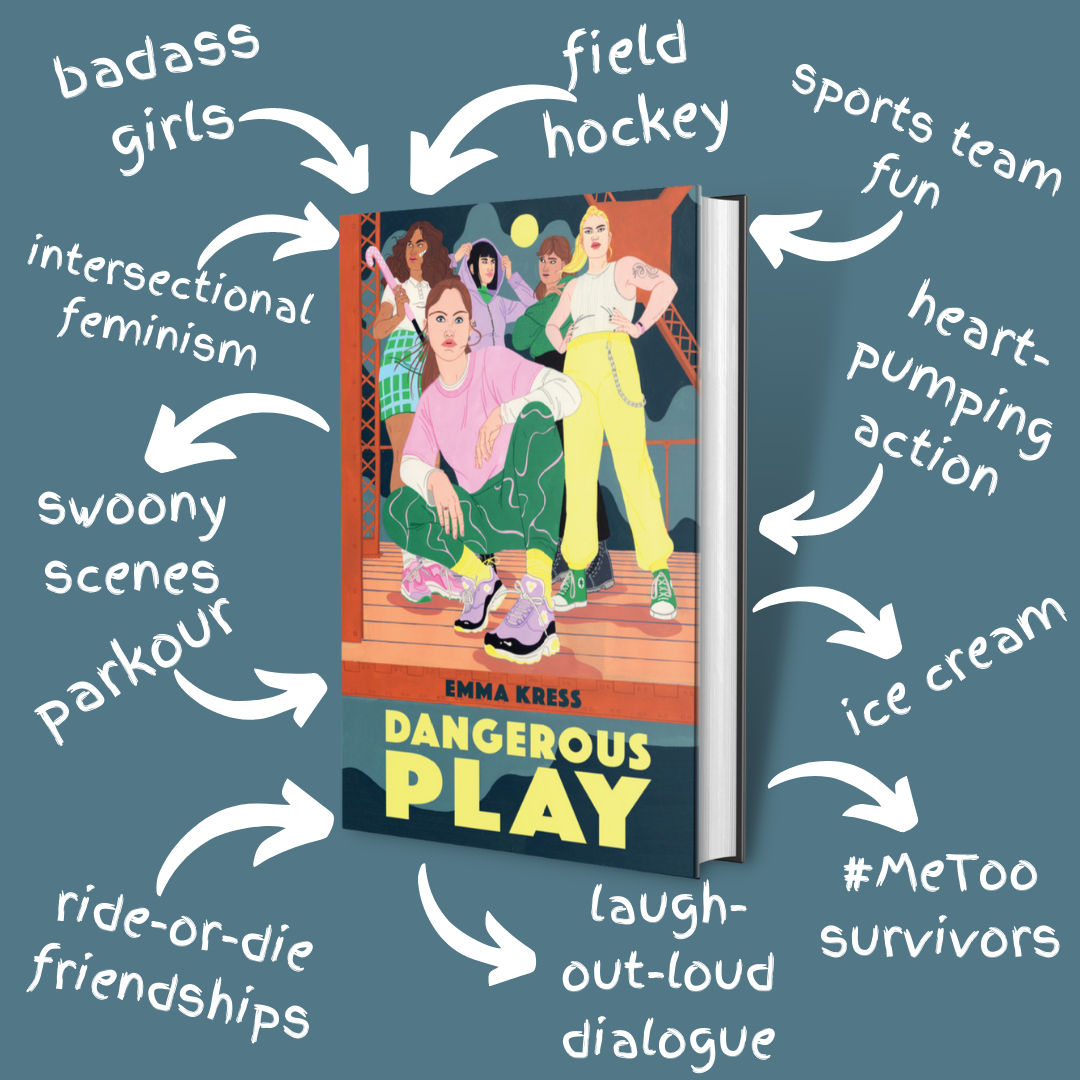 What was the spark that led to Dangerous Play, why was it important for you to write this particular story, and what did the process from spark to book look like?
What was the spark that led to Dangerous Play, why was it important for you to write this particular story, and what did the process from spark to book look like?
Dangerous Play is about the captain of a girls’ field hockey team. When she’s sexually assaulted, her ride-or-die team turn into vigilantes…but it might cost them everything.
This team of fierce, hyper-athletic, determined girls showed up when I was in the middle of writing something else. I told them to go away, but they didn’t listen. Even though they showed up sudden and loud, I had been thinking about some of book’s components for some time. For instance, I’d long noticed a gap in YA literature. While there were powerful books that followed a survivor’s journey, I didn’t see any books about rape culture overall. I’d also never seen a book about girls’ sports and the kinds of friendships that can happen on an intense, competitive girls’ team. I started writing Dangerous Play back in 2014. Thankfully, now there are books like Moxie, which address rape culture. And while there are more books featuring athletic girls (like 2021 debuts In the Same Boat, by Holly Green, and The Knockout, by Sajni Patel) there are few that feature full teams. As a result, I was thrilled when the girls of Dangerous Play showed up, filling a need I’d had for a long time. In many ways, this was the book I needed both when I was a teen, and as an adult.
Where do you like to write?
I used to like to write here, surrounded by books. And yet, thanks to the pandemic and everyone in my family in virtual school or working from home, I’m now squeezed in between my bed and the window on a folding table. But while it’s not as pretty, being able to shut my bedroom door is EVERYTHING.
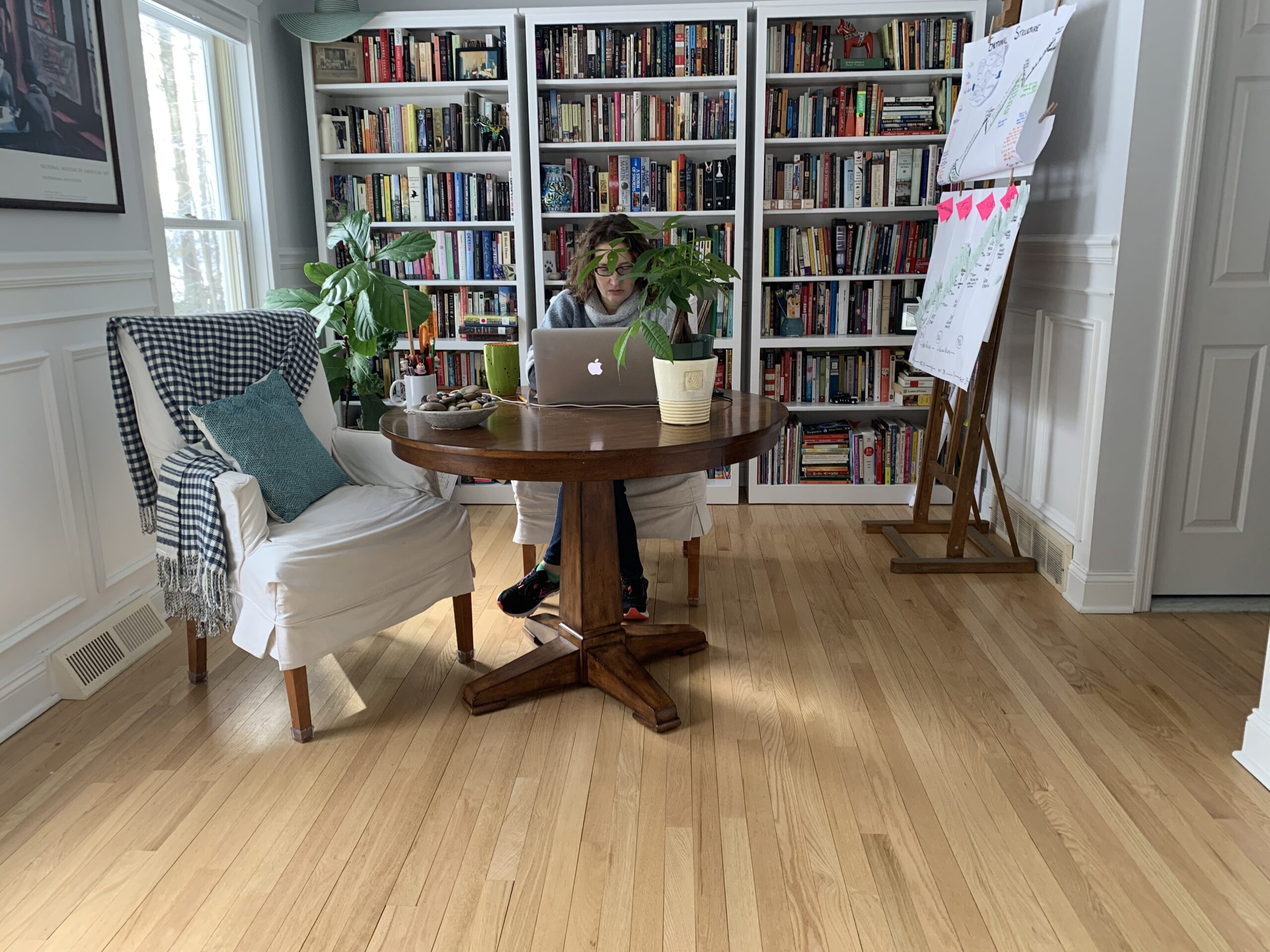

 What’s the best thing about transitioning from writer to debut author?
What’s the best thing about transitioning from writer to debut author?
EK: I’ve been thinking a lot about that old version of me—that 10-year-old girl—who wanted more than anything to be a published author. It’s a surreal and incredible thing to be able to give her this gift. How many people get to do that? It feels like a true privilege. And I think the gift feels all the bigger because of how long it took for me.
What’s the most challenging thing about transitioning from writer to debut author?
Every day I’m learning something new. Which in many ways is wonderful, because luckily I like to learn new things. But the learning curve is steep. It’s a bit daunting and tiring to be standing at the foot of yet another learning mountain on a near daily basis. Part of that is the debut year. But part of that is debuting in a pandemic. So even if I ask my mentors who are more experienced for advice or insight, none of them debuted in a pandemic so it makes things a bit more interesting for us pandemic debuters. Thankfully the kidlit community is the most inclusive and supportive of which I’ve ever been a part—so we’re weathering this together.
Please share any advice that’s helped you best (from others or yourself) in your kidlit career?
I think A LOT about my boat and I recommend every writer get themselves a boat. Inside my boat are the things I can control: honing my writing craft, how much I dedicate to my writing, how vulnerable I am on the page, getting the words on the page, teaching my kids to clap when I finish a draft. Literally everything else is outside my boat: book deals, reviews, lists, other people’s opinions, whether my kids actually clap, etc. It’s so helpful to train your focus inside your boat. In publishing, there are a lot of shiny somethings, lots of ego catnip, lots of opportunities to, as one writer friend likes to say, “compare and despair.” Retraining our focus to be inside our boat must be a habitual and intentional act. Let craft and our enjoyment of it be our unwavering center.
Hope Sparkers–what are they, and where can people get some?
I love that you asked! As you know, I’ve done a lot of research on hope and how helpful it can be for writers for children and young adults to incorporate hope as part of their writer’s toolkit. I made up the term “Hope Sparkler” to refer to all the things that I believe give us hope: friends/family/inspirational leaders in your community; religion/ philosophy/ belief system/ faith in ruling bodies; your own positive characteristics (creativity, humor, optimism, gratitude etc.); passion/talents (baking, gardening); place; and, of course, books. Books not only can contain hope sparklers but they can be them in their own right. If there’s anything we learned during this last year, it’s that we need as many hope sparklers as we can get. We need them to light our way during those dark days. And children need them most of all.
Where can writers and educators access your awesome Instagram videos for use in their practice or classroom?
Oh my gosh, these videos have been such a gift to me as well. Every single writer I’ve interviewed has offered such wisdom and inspiration. With the exception of one long-form video, all videos are about 15-minutes and packed with craft. At this point, there are thirty-six videos and you can find them all on my IGTV. I plan to offer these again during this year’s NaNoWriMo. I love any opportunity to blend my love of teaching and writing!
What’s on the horizon for Emma Kress?
I’m busy revising what I hope will be my second book—also a contemporary stand-alone YA. Like Dangerous Play, you can expect it to be feminist, funny, and fierce. On August 3rd, I’ll have a virtual launch with the great Nova Ren Suma along with several other upcoming launch events and writing workshops. I offer one general and one writing-focused newsletter every month (sign up here: https://www.emmakress.com/contact ). I’m also very active on all my social media. I look forward to connecting with all of you.
Some other mentions of Emma Kress and Dangerous Play to check out: A review on Publishers Weekly, a craft lesson on writing about sports on Kid Lit Craft.
Emma Kress is a long-time educator and 2014 finalist for NY State Teacher of the Year. She’s a graduate of Vassar College, Columbia University’s Teachers College, and the MFA program in Writing for Children and Young Adults at Vermont College of Fine Arts. She lives with her family in Saratoga Springs, NY. Dangerous Play is her debut novel. Learn more about Emma Kress and her amazing work on her website and on Instagram, Twitter, Facebook and TikTok.
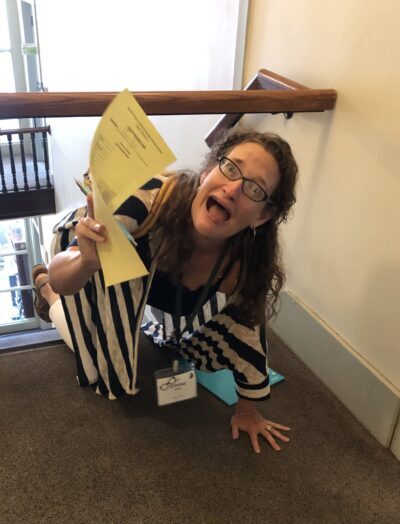
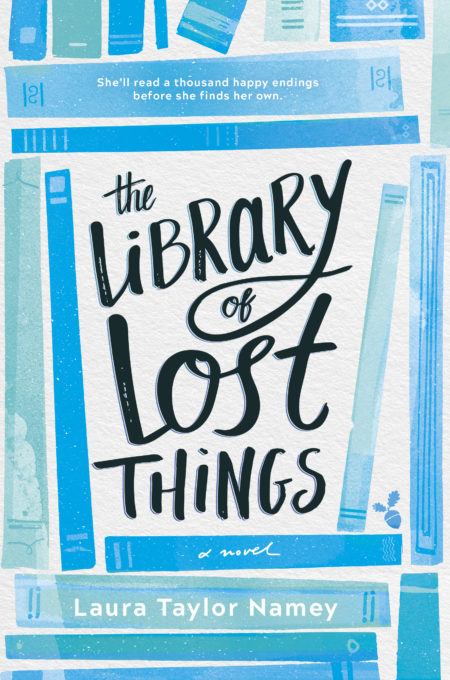 I had the pleasure of doing an email interview with my lovely friend whom I had the pleasure of meeting several years ago at a
I had the pleasure of doing an email interview with my lovely friend whom I had the pleasure of meeting several years ago at a 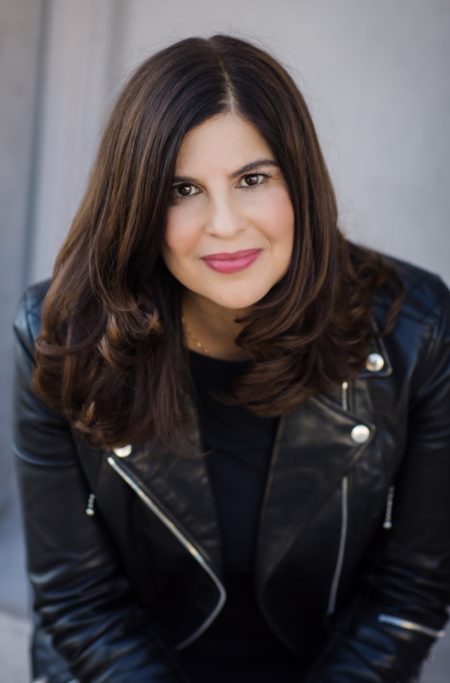 EZ: What are your favorite kinds of books to read, and how do they inspire your writing?
EZ: What are your favorite kinds of books to read, and how do they inspire your writing?
Recent Comments